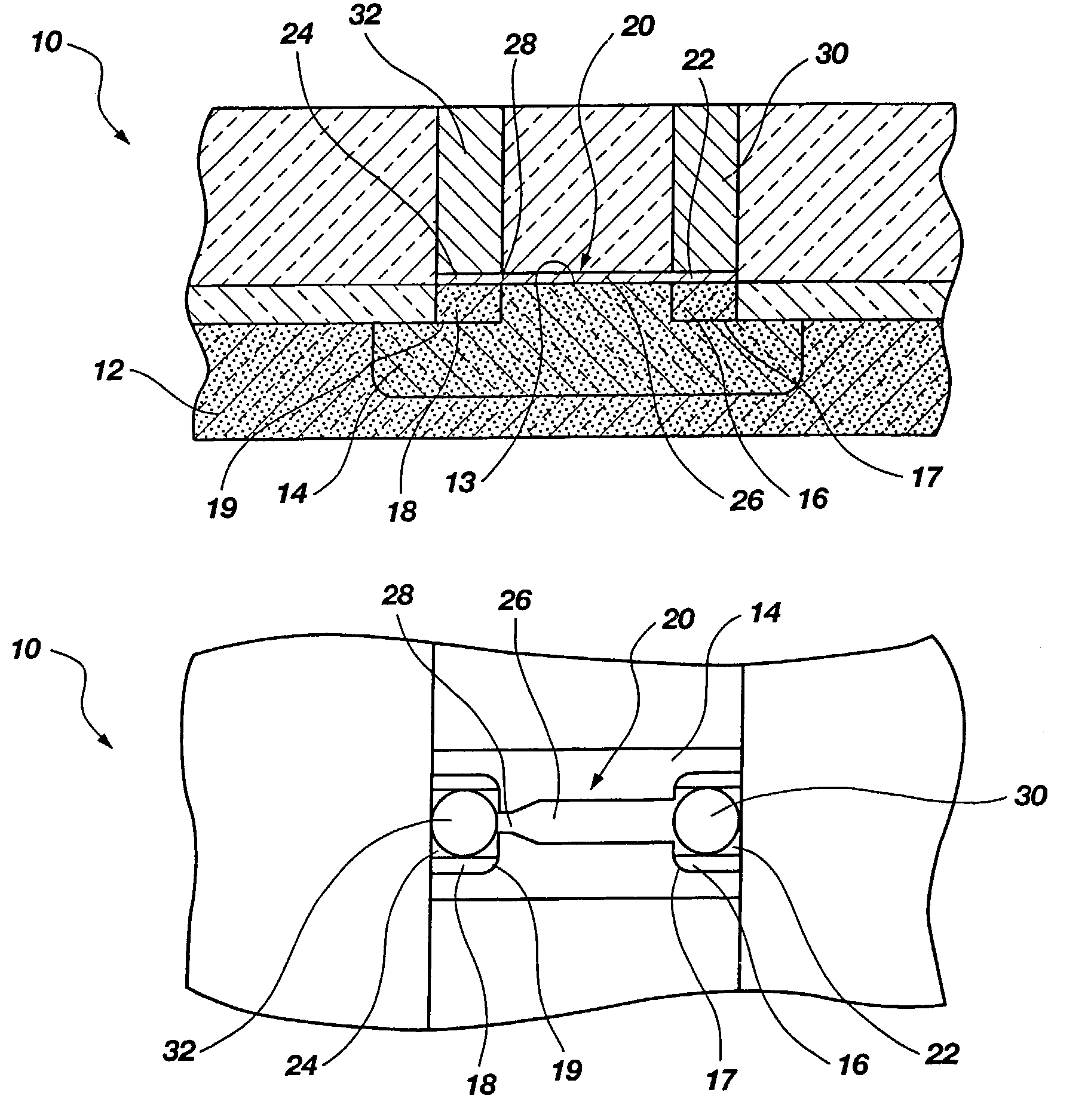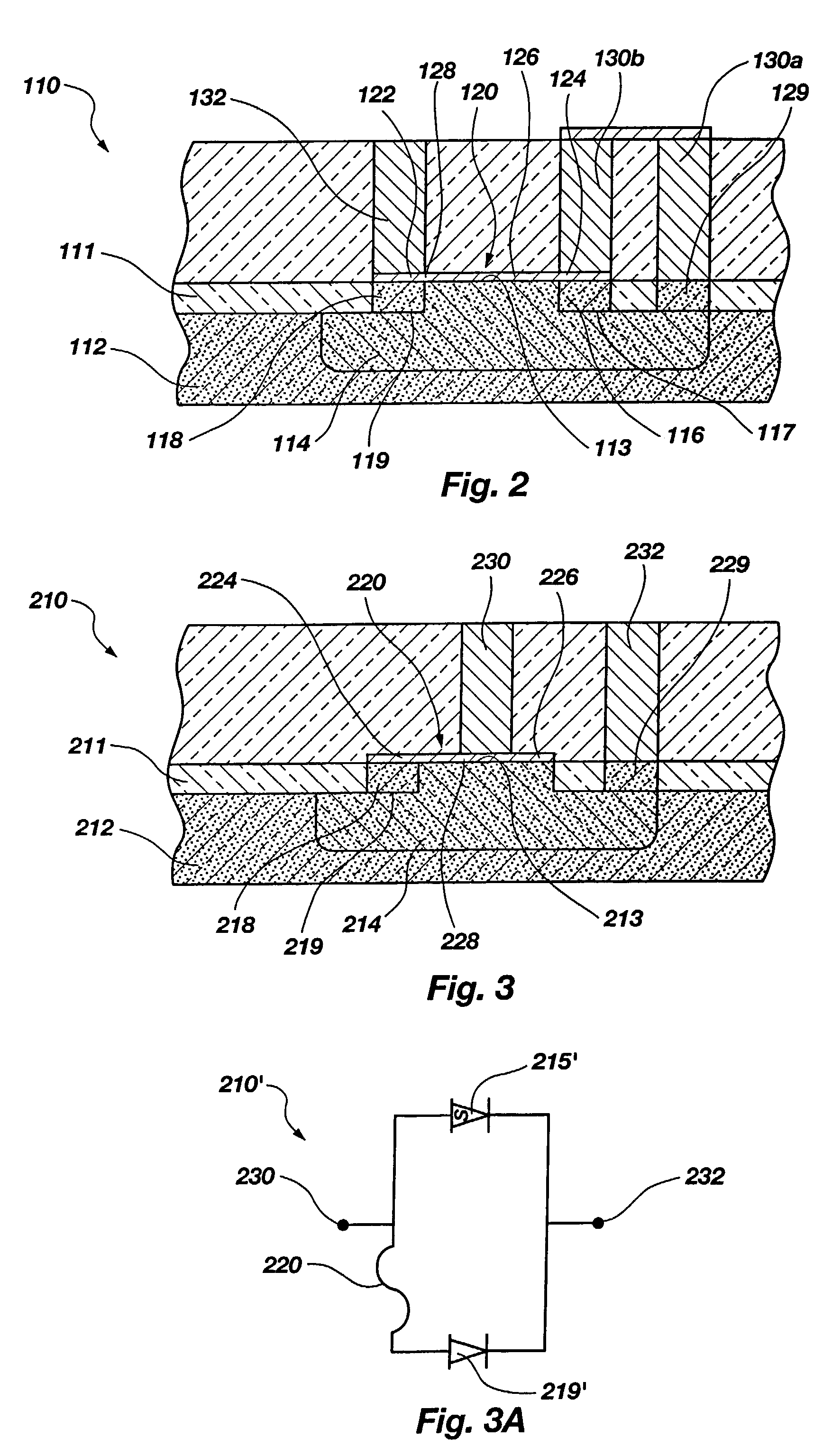Methods for fabricating fuses for use in semiconductor devices and semiconductor devices including such fuses
a technology for semiconductor devices and fuse components, applied in semiconductor devices, semiconductor/solid-state device details, electrical devices, etc., can solve the problems affecting the operation of the circuit, so as to achieve the effect of preventing the re-closing of the circui
- Summary
- Abstract
- Description
- Claims
- Application Information
AI Technical Summary
Benefits of technology
Problems solved by technology
Method used
Image
Examples
Embodiment Construction
[0038]The following description provides specific details about the fuse and methods of the present invention in order to provide a thorough understanding of the present invention. The skilled artisan, however, would understand that the present invention may be practiced without employing these specific details. Indeed, the present invention can be practiced in conjunction with other materials, differently configured structures, and other fabrication techniques, such as those known in the industry.
[0039]The process steps and structures described herein do not form a complete process flow for fabricating semiconductor devices or a completed device. Only the process steps and structures necessary to understand the present invention are described.
[0040]With reference to FIGS. 1 and 1A, a semiconductor device 10 including a fuse 20 according to the present invention is illustrated. Semiconductor device 10 includes a semiconductor substrate 12 within which a common well 14 of a first con...
PUM
 Login to View More
Login to View More Abstract
Description
Claims
Application Information
 Login to View More
Login to View More - R&D
- Intellectual Property
- Life Sciences
- Materials
- Tech Scout
- Unparalleled Data Quality
- Higher Quality Content
- 60% Fewer Hallucinations
Browse by: Latest US Patents, China's latest patents, Technical Efficacy Thesaurus, Application Domain, Technology Topic, Popular Technical Reports.
© 2025 PatSnap. All rights reserved.Legal|Privacy policy|Modern Slavery Act Transparency Statement|Sitemap|About US| Contact US: help@patsnap.com



